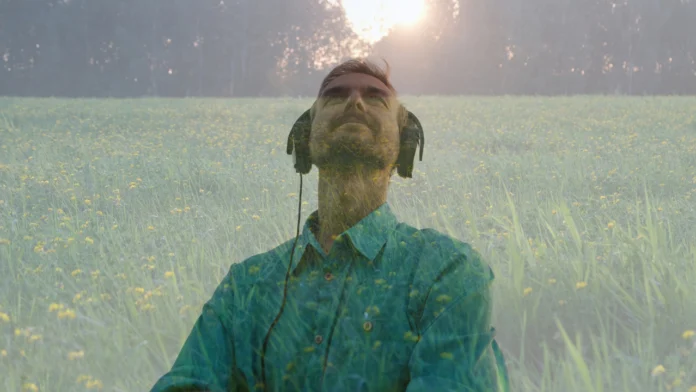Exposure therapy is a proven frontline treatment for helping people face and overcome their fear. This method helps change how the brain reacts to fearful situations, sensations, or memories by slowly and gradually exposing fears. The brain can adapt to this slow approach and learns that the things they’re afraid of aren’t actually dangerous.
Therapy.com is user supported. We receive a commission fee from purchases made through BetterHelp links.
Learn More
What is Exposure Therapy?
Exposure therapy is a type of cognitive behavioral therapy (CBT) and is the standard in treating many anxiety disorders and trauma related conditions. Exposure therapy involves activating the “fear structure” in the brain, and new information is presented to dispel unrealistic fears.
Many people simply try to avoid their fears rather than confront them. Avoidance may provide short term relief, but it keeps anxiety alive in the long run. Exposure therapy takes a direct approach to overcome these fears.
In exposure therapy sessions, anxiety habituates, which means it heightens but then naturally decreases. Over time, fears and anxieties decrease and go away. Exposure therapy encourages individuals to face their anxieties or fears until they no longer provoke intense emotion, instead of avoiding them.
Exposure therapy for anxiety disorders retrains fear responses in the amygdala and is tailored to each client. Exposure therapy can consist of experiencing real life situations (in vivo), imaginal exposure, or being exposed to physical sensations (interoceptive) related to anxiety, fear, or discomfort.
Therapists may also use graded exposures in which they work with clients to create a hierarchy of feared situations from those that produce the least anxiety to those that produce the most.
How Exposure Therapy Works
Exposure therapy can help treat anxieties related to phobias, panic, and OCD. Each type of exposure therapy is similar in helping clients face their fears and break the avoidance cycle. To get over specific phobias, graded exposure helps individuals face their fears one step at a time.
If someone has a fear of dogs, the individual may be exposed to pictures of dogs and progress to eventually interacting with a dog in person.
To combat panic disorders, an individual can use interoceptive exposure to confront physical symptoms of panic, such as heart racing, breathing changes, or dizziness. In this procedure, the therapist intentionally triggers bodily sensations of panic but in controlled ways.
Therapy.com is user supported. We receive a commission fee from purchases made through BetterHelp links.
Learn More
If dizziness triggers your panic attacks, the therapist might have you spin a chair until you’re dizzy. Repeated spinning can help you realize that while being dizzy may be uncomfortable, it won’t harm you, and the panic subsides.
With social anxiety disorders, clients are repeatedly exposed to their fears, such as public speaking, and they realize that the embarrassment or judgment they feared was not as bad, or maybe doesn’t happen at all.
Those with OCD can benefit from exposure and response prevention (ERP). ERP helps people face their fears without engaging in their compulsive behaviors.
For example, someone with contamination OCD might touch something they find gross and not wash their hands. This allows the anxiety to naturally go away over time with repeated exposure, instead of relying on compulsions for temporary relief.
Types of Exposure Therapy
Different types of exposure therapies have been developed for various conditions. While they all share the same strategy of confronting your fears, they differ in how they do so.
Exposure and Response Prevention Therapy (ERP)
One widely used evidence based treatment for OCD is exposure and response prevention therapy (ERP). OCD is a mental health condition in which individuals have thoughts or images that bother them (obsessions) and feel they must do or avoid certain things (compulsions) to feel better or reduce their anxiety.
Exposure therapy for OCD gradually exposes individuals to their obsessions without compulsions. The individual learns that their anxiety can go away without performing the ritual. This realization breaks the connection between the obsession and the compulsion.
Prolonged Exposure Therapy
Prolonged exposure therapy (PE) is an exposure therapy protocol to treat posttraumatic stress disorder (PTSD). Avoidance is a common strategy and symptom of PTSD to cope with the bad memories, reminders, and feelings associated with the traumatic experience.
PE uses imaginal exposure and in vivo exposure to process the traumatic memories in a safe environment. Over time, the memories no longer cause intense fear.
Clients in imaginal exposure repeatedly talk about their traumatic experience out loud to the therapist. The sessions are recorded so the client can listen to them between sessions. This exposure to the traumatic memory helps the brain learn that the memory itself isn’t dangerous.
Those undergoing in vivo exposure slowly face real places, situations, or objects that they had avoided because they are reminders of the trauma. Through prolonged exposure therapy, clients learn to deal with trauma related triggers instead of avoiding them.
Therapy.com is user supported. We receive a commission fee from purchases made through BetterHelp links.
Learn More
Narrative Exposure Therapy
Another effective treatment for PTSD is narrative exposure therapy (NET). NET uses storytelling motifs to help survivors of complex traumas (e.g., war, torture, or childhood abuse) put together a detailed and chronological narrative that incorporates the traumatic events into their life story. The client then shares this story with a therapist.
Similar to imaginal exposure, the client revisits their trauma, but these events are mixed with other neutral or positive memories. This process helps the brain organize trauma memories within a larger context, rather than treat them as standalone events. NET allows trauma survivors to regain control of their stories to make sense of what happened.
Exposure Prevention Therapy
The phrase “Exposure Prevention Therapy” isn’t a formal exposure therapy technique, but it emphasizes the main idea behind all exposure techniques: to not avoid. In any anxiety disorder, individuals often get stuck in vicious fear or anxiety cycles. Using avoidance gives them temporary relief but only makes the fear worse long term.
Resisting the instinct to escape rewires the brain. Over time, sitting in uncomfortable anxiety becomes easier without avoidance.
Effectiveness and Success Rates
Many research studies have found that exposure therapy treatments have led to significant improvements in anxiety and fear symptoms. Some studies show that in vivo exposure can be effective for specific phobias.
Sometimes, just one or a few sessions can completely get rid of phobic avoidance. Exposure therapy has been shown to substantially decrease panic attacks and OCD, along with their accompanying symptoms.
To get the most out of exposure therapy, working with counselors who specializes in exposure therapy and your particular disorders or symptoms is key. Active participation and sticking with the treatment is important to improve your symptoms.
To avoid feeling overwhelmed, gradual exposures help ensure that each exposure is manageable. Trying to minimize avoidance during exposure also improves the effectiveness of exposure therapy. As hard as it may be, persistence and patience is crucial even if progress is slow.
FAQs
Exposure response therapy, also known as exposure and response prevention therapy (ERP), is about gradually facing your fears, not using avoidance to cope, and resisting compulsions. This helps your brain get used to anxiety without performing rituals and eventually lessens OCD symptoms.
Prolonged exposure therapy (PE) helps individuals with PTSD slowly face their traumatic memories and triggers in a controlled and safe environment, rather than avoiding them. PE lessens the pain of traumatic memories, leading to fewer flashbacks, decreased avoidance, and improved PTSD symptoms.
Yes, exposure therapy is a highly effective and evidence based treatment for anxiety disorders, including phobias, panic disorder, social anxiety, PTSD, and OCD. By systematically confronting fears with the guidance of a skilled exposure therapy clinician, individuals can quickly see improvements and experience long lasting reduction of symptoms.
After learning about exposure therapy, it’s natural to wonder, “Does exposure therapy work?” The answer is yes. Exposure therapy has been widely studied and is highly effective for many people with anxiety, trauma, and OCD symptoms.
Finding Exposure Therapy Near You
If considering exposure therapy for anxiety or OCD, seek professionals specializing in exposure treatments. Start by searching the Anxiety and Depression Association of America (ADAA) or the International OCD Foundation (IOCDF), filtering for location and specialization.
Look for therapists who mention exposure therapy, exposure and response therapy for OCD, prolonged exposure therapy, or narrative exposure therapy for PTSD. If options are limited, consider teletherapy to connect remotely with a trained mental health professional who offers virtual exposure sessions.
Therapy.com is user supported. We receive a commission fee from purchases made through BetterHelp links.
Learn More
The next step is choosing an exposure therapist. Ask about the therapist’s approach and the type of exposure therapy for anxiety disorders they use. Inquire how effective the therapist feels they’ve been in using exposure therapy in their practice, and how much of their practice currently involves exposure techniques.
Verify their credentials, license, and any specialized certifications they have in exposure therapy techniques. Memberships with recognized associations can provide insight into their practice.
Ensure the therapy and therapist fit your needs. Ask about the frequency of sessions, what clear treatment goals the therapist sees, and how they provide a supportive therapeutic relationship. Take the time to find the right provider so you can make the most out of your exposure therapy treatment to achieve a successful and lasting recovery.




